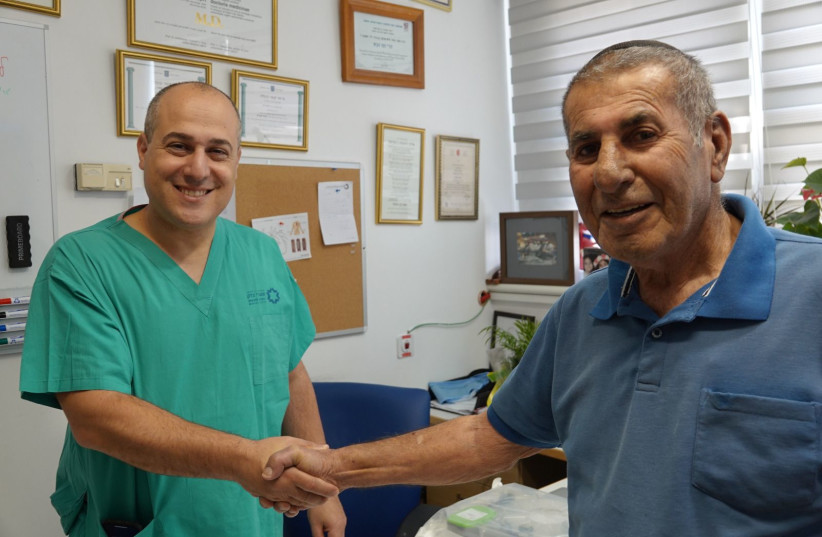Unable to undergo open-heart surgery or even conventional heart catheterization to treat his severe arterial calcification, 71-year-old Natan Cohen became the first person in Israel to have his vessels cleared using a tiny crown coated with a diamond chip.
In conventional catheterization, a thin, flexible tube is threaded from the patient’s wrist or groin through a blood vessel to the heart to diagnose certain heart conditions such as clogged arteries or irregular heartbeats. When the clogged arteries can be reached and cleared, angioplasty is performed by introducing a tiny deflated balloon and then inflating it when it reaches the problem area.
Interventional cardiologists at the Integrated Heart Center in Jerusalem’s Shaare Zedek Medical Center (SZMC) used this innovative, diamond chip approach to drill through the hardened calcification that put Cohen in a life-threatening situation. He is also battling lung cancer, which was a further complication preventing conventional means of clearing out his clogged arteries.
The treatment was first performed in Israel by Dr. Danny Dvir, director of SZMC’s interventional cardiology unit and catheterization rooms, using the most advanced generation DiamondBack360 system from CSI (Cardiovascular Systems Inc.) in St. Paul, Minnesota, represented in Israel by Y. Gil Medical.
Cardiologists and other specialists carried out a multidisciplinary consultation, where it was decided to perform an innovative treatment that has not yet been performed in Israel with the tiny crown about a millimeter in diameter that is coated with a diamond chip.

How was the operation done?
The diamond rotates at a tremendous speed inside the artery – about 100,000 revolutions per minute – making possible the cleaning of the artery cavity, sanding the superficial calcium and crushing the surrounding calcium ring.
The technology involves combining two complementary mechanisms of action – a centrifugal movement of the crown (pulsatile force) that creates orbital waves along the artery to break up the calcium that is in the thickness of the artery and to improve the artery’s responsiveness – plus a two-way and selective mechanical removal mechanism (atherectomy) of the calcium in the artery (intimal calcium).
“The operation was a success, and the patient was discharged today to his home in excellent condition; he will now be able to continue undergoing the best cancer treatment for his lungs,” Dvir said. “We are pleased to lead an international standard of cardiac catheterization and hope to continue to adopt innovative approaches for the benefit of all patients.”
“The operation was a success, and the patient was discharged today to his home in excellent condition; he will now be able to continue undergoing the best cancer treatment for his lungs”
Dr. Danny Dvir
“I was constantly falling asleep. I thought it was as a result of the lung disease I was suffering from,” recalled Cohen. “I went to my doctor and told him that I feel tired almost all day. I went to Dr. Dvir, and when he told me about an innovative catheterization that would prevent open-heart surgery, I gave my consent.
“The operation was exceptionally successful,” he said. “Only two days have passed since the catheterization and I already feel the change. I feel like new. I woke up, and I was young again.”
Prof. Michael Glickson, who heads SZMC’s Integrated Heart Center, added: “Since its inception, our center has been a pioneer in catheterization and our catheterization unit, headed by Dr. Dvir, continues to lead the cardiac technology front. We will continue to promote the field for the benefit of our patients.”
